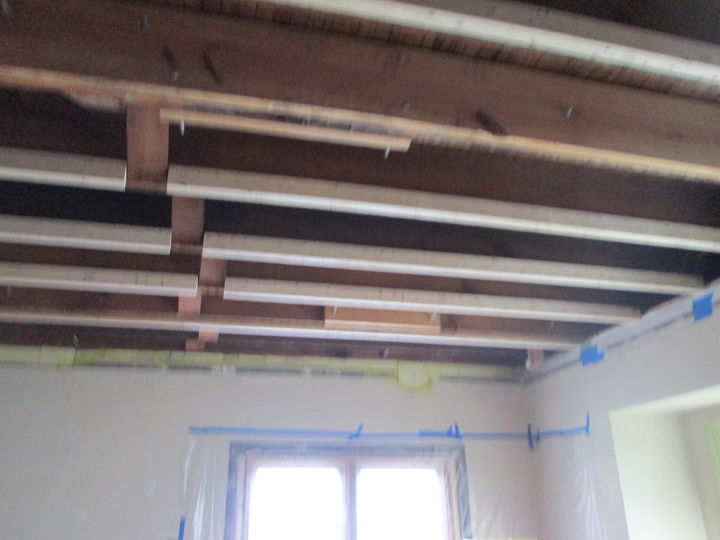I want to get rid of my popcorn ceiling, but its in every room!
Related Discussions
Vinyl plank flooring vs pergo (laminate)
I currently have stinky dirty carpeting in my living room and I want to replace it with a durable flooring that can stand up to dogs and kids.
How to remove popcorn ceiling that has been painted?
Does having a paint over a popcorn ceiling change how I'd remove the popcorn ceiling?
How to apply peel and stick wallpaper?
I want to spruce up my walls with peel-and-stick wallpaper. Has anyone used this before and can advise me as to how to apply it properly?
How to stain wood floor?
I've heard staining is a good technique for updating floors. So how do I stain my wood floor?
Hi. I want to remove popcorn from my bedroom ceiling and hide fan wire
Want to hide fan wire in concrete ceiling and attach it behind shitrock to electric outlet. Any tips on how to remove a popcorn ceiling?
Paneling/flooring on a ceiling: Good or bad idea?
Has anyone used paneling or appropriate flooring on a ceiling? After a plumbing disaster upstairs, we had to remove our plaster and lathe dining room ceiling in our... See more



https://www.hometalk.com/categories/remodling-renovating/ceiling/popcorn-ceilings
http://www.hometalk.com/search/posts?filter=Popcorn%20Ceilings%20in%20Ceiling
I use 3m masking plastic to mask off my walls, use carpet & hardwood floor mask to cover the floors. I myself use a pump up weed sprayer when we scrape ceilings. Nice and wet a 4x4' area at a time. Comes right down with a good 10" drywall blade. If you get it too wet the paper will start to rip. You can hide that with light sanding after it dries. Hope this helps.. contact@coloradorenovation.com or www.coloradorenovation.com
Many years ago me and my crew would wet and scrape. Tedious, messy, and costly work. A few years back drywall manufacturers started making 1/4" thick drywall in 4'X10' sheets just for this kind of purpose. We would install the drywall right over the textured ceilings. We would install crown molding where the ceiling and wall meet. No mudding there. The 10' length drywall meant very little seams.
How long would that last what would be the cost?
Unless the 1/4 " drywall method is done by an experienced sheet-rocker, ( and even then), there are issues with screw patterns--hitting the joists, driving the screws to deep--(even on heavier thickness sheet-rock the screws can be screwed to far as to destroy the fastener integrity and holding power!) The fact that your putting a sheet good over something as unstable as the surface of the popcorn material doesn't make for a good attachment, when you factor in the screw blowout issue. Aside from that, many joist systems could become over stressed with the additional weight. If it is a trussed roof system, they will be 24" on center---- If the sheet-rock is only 1/4" material you will have sagging between the rows of fasteners! One of the reasons popcorn ceilings came along was to disguise The wavy surface of the " 5/8, or 1/2 inch thick sheet-rock sagging between the joist or truss cords! I know how messy it can be, and you'll discover muscles you never realized you had, but Renovation by Design gave a really good description on how to proceed. If your going to attempt it yourself, think---One room at a time!!!, use good ventilation and dust masks, eye protection will fog up if not well vented, and either a good rolling scaffold set to your on perfect (as can be!) height, or a good type 3 step ladder that won't walk while your shakin and twisting to the mood music!
One room at a time........well worth the effort. Wet then scrape off. Let dry, prime, then paint. I actually use Ace Hardware's High Hiding White, interior wall paint, in a satin finish. It's a true white, a wonderful sheen and looks awesome. Best of luck.
This guy had a genius hack!